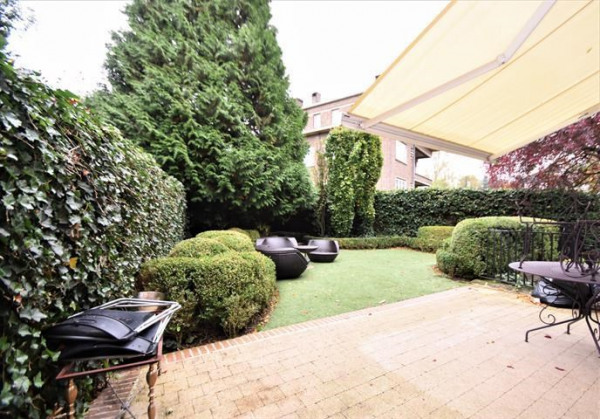Tot Brussel
| Port of Brussels | |
|---|---|
| Location | |
| Country | Belgium |
| Location | Brussels, Brussels Capital Region |
| Coordinates | 50°52′07″N4°21′18″E / 50.8687°N 4.3549°E |
| UN/LOCODE | BEBRU[1] |
| Details | |
| Land area | 64 ha (160 acres) |
| Statistics | |
| Website www.havenvanbrussel.irisnet.be | |
Brussels, Belgium time is 0 hours ahead of CET. Other conversions: CET to Abuja Time, CET to Zagreb Time, CET to Makkah Time, Brussels Time to CET. Getting Started. 1 Add locations (or remove, set home, order) 2 Mouse over hours to convert time at a glance 3 Click hour tiles to schedule and share + Sign in to save. Worried about your upcoming Brussels Airlines flight? Read all about our flexible rebooking options and what we do to for your health and safety on our flights. 9Hotel Chelton is only 4 stops by metro to the Grand Place and Brussels' Central Station. The Council of the European Union is just over 5 minutes’ walk away. Directions Place the peeled potatoes in a saucepan and fill with cold water. Bring to a boil, and continue boiling until the. Preheat the oven to 425 degrees Fahrenheit, and line a baking sheet with parchment paper. Grate the potato into a mixing bowl using the largest holes on your grater. The shredded brussel sprouts mixed with golden shallots and sour cream make for a luxurious topping to these tater tots, while still paying homage to the 1950’s. I feel like this Creamed Brussel Sprout Tater Tot Casserole could be served at any occasion and will be met with a room full of smiles. Just make sure you eat them before midnight.
Behoort Brussel Tot Vlaanderen

The port of Brussels is an inland port, which is accessible for ships up to 4,500 tons and push towing convoys up to 9,000 tonnes. Via the Brussels–Scheldt Maritime Canal even sea-going vessels (fluviomaritime and coasters) can reach the outer port, and through the Brussels–Charleroi Canal the transit to the Walloon region is assured. The port is located in the City of Brussels in the Brussels Capital Region.
On the limited surface area (64 ha) there are approximately 300 companies, which account for about 13,000 jobs.[2]
General information[edit]
In the port more than 24 million tons of goods are traded yearly, most via railway and road transport, and over 6.6 million tons via the waterway transit (as of 2016).[3]
The port of Brussels was founded in 1993,[4] as a result of the splitting of the N.V. Zeekanaal in a Flemish and a Brussels institution, five years after the authority over the ports in Belgium was transferred to the regions. The new autonomy in 1993 immediately led to new dynamism and growth in the results. In the twenty years prior to that the traffic of 14.4 million tonnes in 1974 shrunk to less than a third. Since 1993, the traffic increased by 60% again.


The main shareholders are the Brussels-Capital Region (56%) and the city of Brussels (35%). Together with the Brussels-based investment company Brinfin (3.9%) and some other municipalities (5.1%) they indicate the members of the Board of Directors. The first Director General was Steven Vanackere (1993–2000).[5] Nowadays Mohammed Jabour is the chairman of the Board of Directors,[6] and Alfred Moens the general manager.[7] The current competent minister is Rudi Vervoort, minister-president of the Brussels-capital region.
History[edit]
The current port of Brussels that lies North from the actual city centre finds its origin in the construction of the Willebroek Canal, which was opened in 1561 for shipping.[8] Over the years, within the city walls different docks were excavated that only were muted by the end of the 19th century because they no became insufficient, and the port company located outside the 'Pentagon of Brussels' began to develop. The street names along the former docks, however, still refer to the activities from then, so the location remains recognizable even today.
There were six docks in total, three docks at the Oeverpoort (Porte de Rivage) where the channel entered the city walls, that were aligned in longitudinal direction, and on each of them another dock followed in transverse direction:
- Grand Bassin and Bassin du Chantier (Dutch: Groot Dok and Werfdok)
- Bassin des Barques and Bassin de l'Entrepôt (Dutch: Schuitendok and Stapelhuisdok)
- Bassin des Marchands and Bassin de Saint-Cathérine (Dutch: Koopliedendok and Sint-Katelijnedok)

See also[edit]
Brussel To Wuhan
References[edit]
- ^'UNLOCODE (BE) - BELGIUM'. service.unece.org. UNECE. Retrieved 17 April 2020.
- ^'Haven van Brussel - Tewerkstelling' (in Dutch). BRU+. Retrieved 10 April 2016.
- ^'Haven van Brussel - Jaarlijkse statistieken' (in Dutch). BRU+. Retrieved 10 April 2016.
- ^'Port de Bruxelles - A little about our history'. BRU+. Retrieved 10 April 2016.
- ^'Steven Vanackere'. The Belgian Presidency of the Council of the European Union. 2010. Retrieved 10 April 2016.
- ^'Port de Bruxelles - Board of Directors'. BRU+. Retrieved 10 April 2016.
- ^'Port de Bruxelles - Management'. BRU+. Retrieved 10 April 2016.
- ^'Tijdsbalk - 1560 tot 1570 jaar in onze jaartelling' (in Dutch). willebroek.be. Retrieved 10 April 2016.
Further reading[edit]
- Delporte, André (1996). Entre Mer et Canal. L'histoire de la navigation en Région bruxelloise (in French). Brussels: le Cercle Royal Georges Lecointe a.s.b.l.CS1 maint: ref=harv (link)
- Delporte, André (2004). Cahiers bruxellois, Revue d'histoire urbaine (in French). Brussels: Mina Martens.CS1 maint: ref=harv (link)
- Dubreucq, Jacques. Bruxelles, une histoire capitale (in French). 4. Brussels: la Section du Canal.CS1 maint: ref=harv (link)